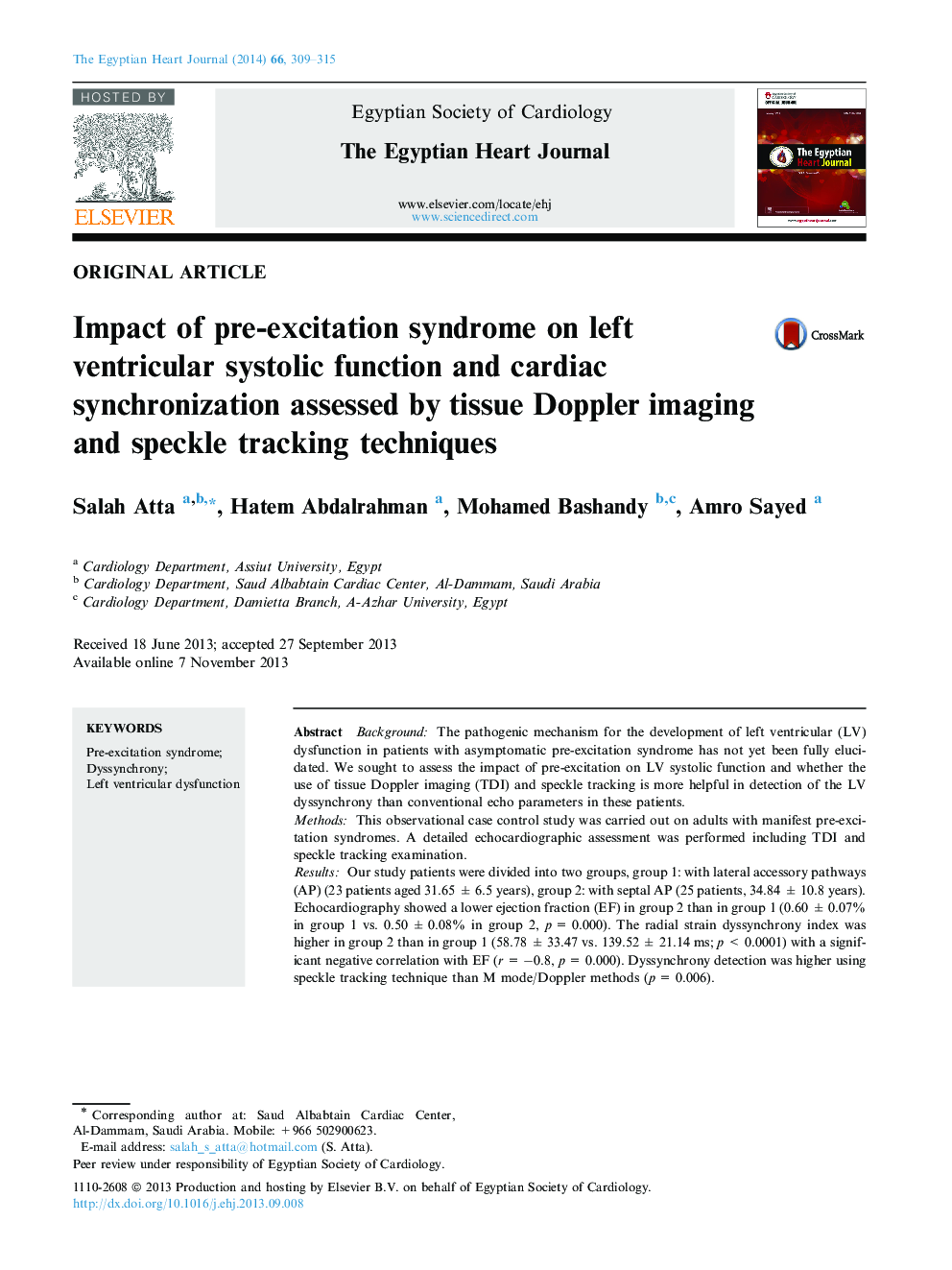| Article ID | Journal | Published Year | Pages | File Type |
|---|---|---|---|---|
| 2910599 | The Egyptian Heart Journal | 2014 | 7 Pages |
BackgroundThe pathogenic mechanism for the development of left ventricular (LV) dysfunction in patients with asymptomatic pre-excitation syndrome has not yet been fully elucidated. We sought to assess the impact of pre-excitation on LV systolic function and whether the use of tissue Doppler imaging (TDI) and speckle tracking is more helpful in detection of the LV dyssynchrony than conventional echo parameters in these patients.MethodsThis observational case control study was carried out on adults with manifest pre-excitation syndromes. A detailed echocardiographic assessment was performed including TDI and speckle tracking examination.ResultsOur study patients were divided into two groups, group 1: with lateral accessory pathways (AP) (23 patients aged 31.65 ± 6.5 years), group 2: with septal AP (25 patients, 34.84 ± 10.8 years). Echocardiography showed a lower ejection fraction (EF) in group 2 than in group 1 (0.60 ± 0.07% in group 1 vs. 0.50 ± 0.08% in group 2, p = 0.000). The radial strain dyssynchrony index was higher in group 2 than in group 1 (58.78 ± 33.47 vs. 139.52 ± 21.14 ms; p < 0.0001) with a significant negative correlation with EF (r = −0.8, p = 0.000). Dyssynchrony detection was higher using speckle tracking technique than M mode/Doppler methods (p = 0.006).ConclusionPatients with pre-excitation syndrome may have depressed LV function unrelated to tachyarrhythmia, especially if the AP has a septal location. This dysfunction may be associated with the LV dyssynchronus contraction caused by pre-excitation. The use of TDI and speckle tracking echocardiographic techniques may be associated with an increase in the identification of manifest pre-excitation patients with significant LV dyssynchrony.
